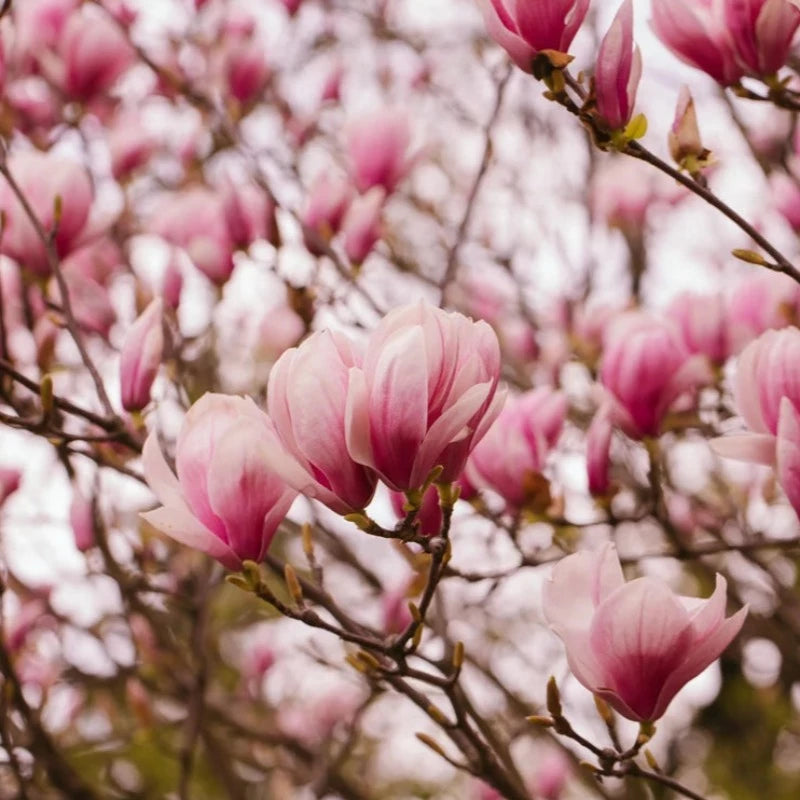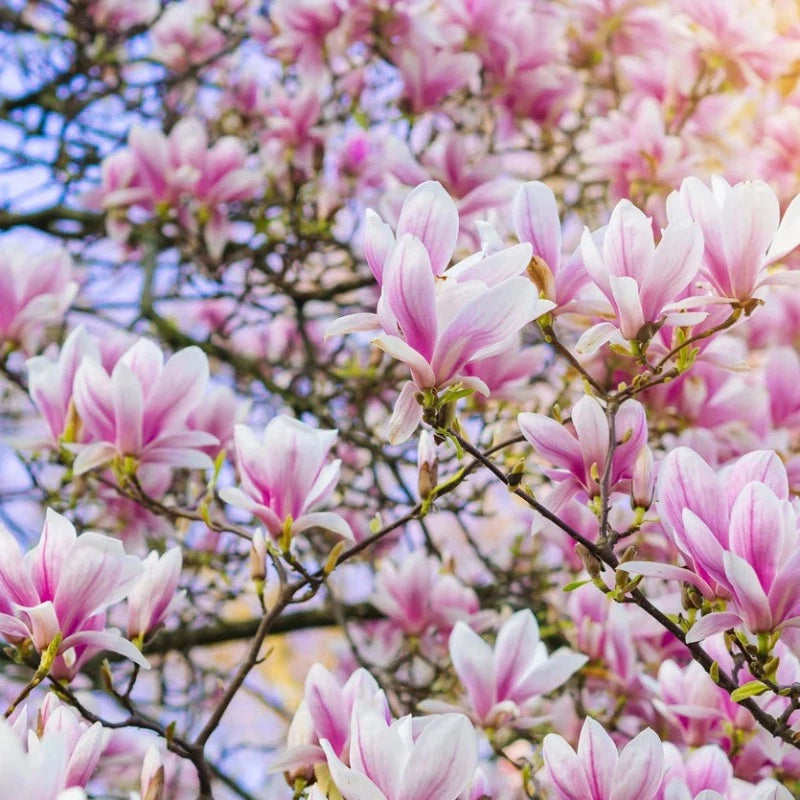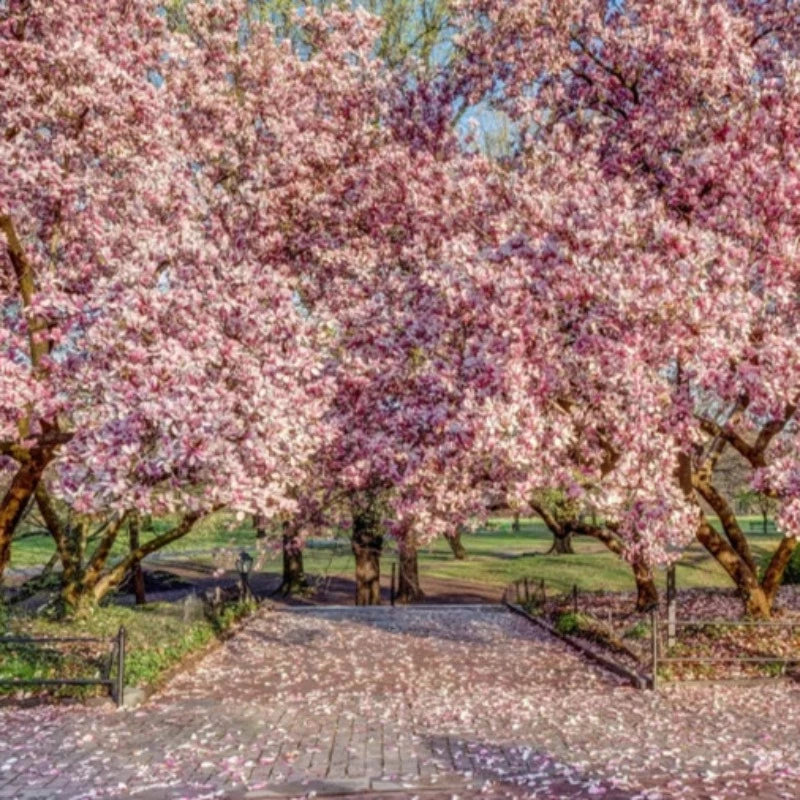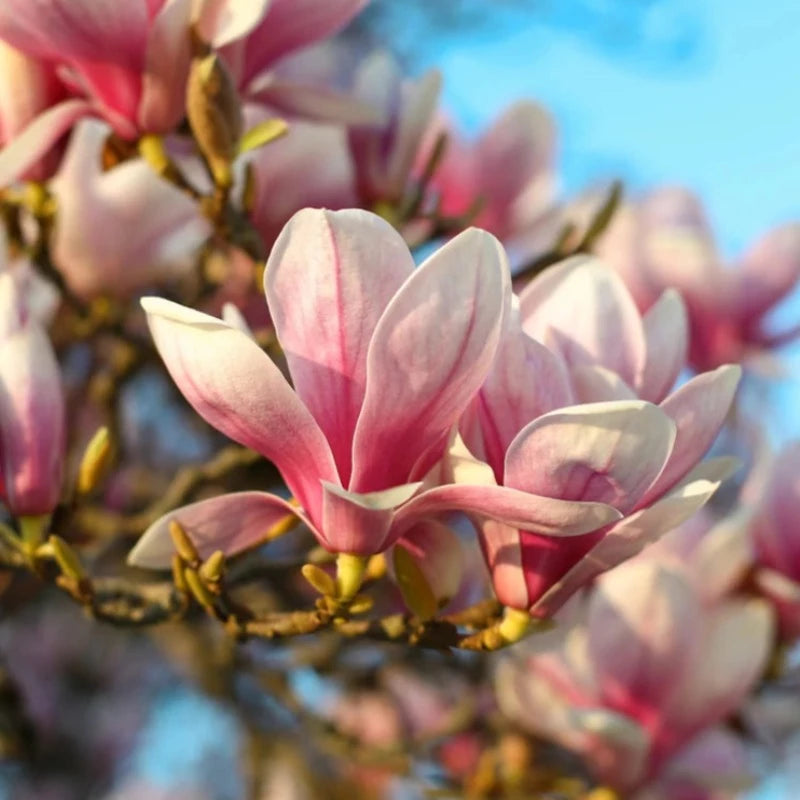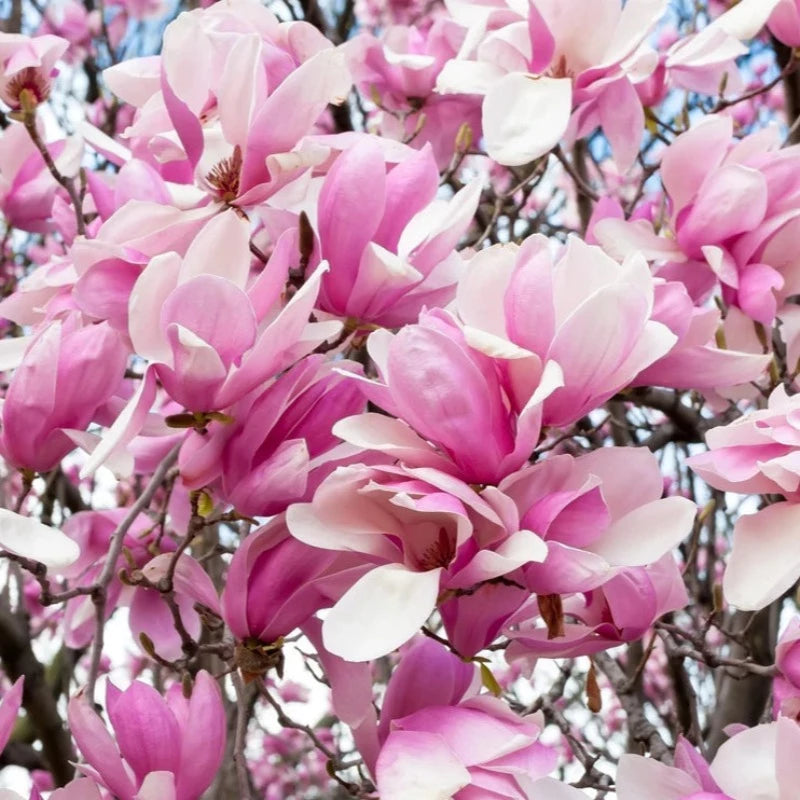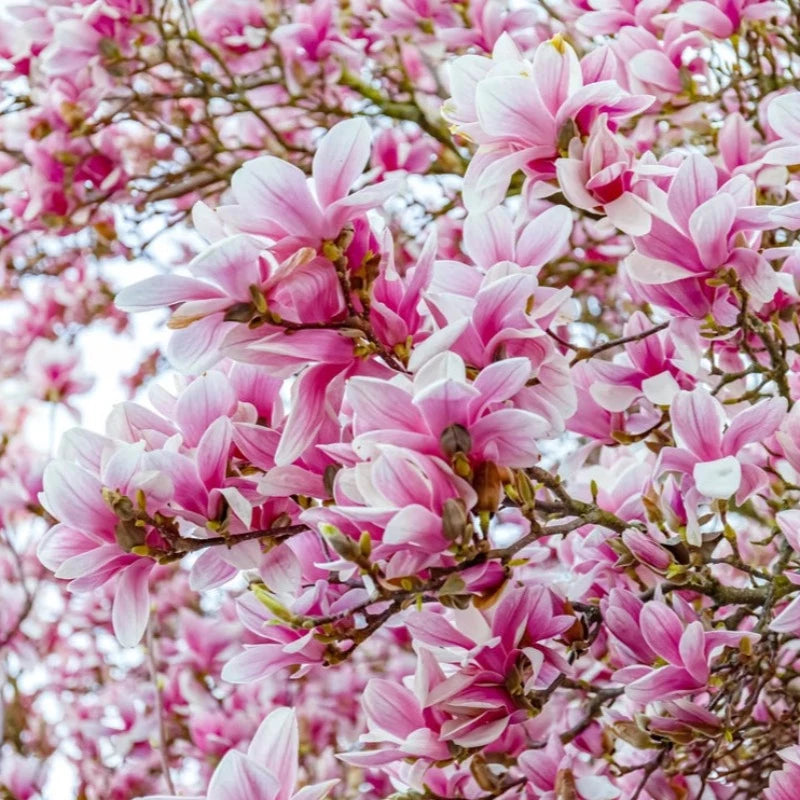- Historical context: The Saucer Magnolia (Magnolia × soulangeana) is a hybrid magnolia that was first bred in the early 19th century.
- Geographical origination: It originated in France, created by French plantsman Étienne Soulange-Bodin.
- Relevant cultural significance: The Saucer Magnolia is widely appreciated for its large, showy flowers and is a popular ornamental tree in gardens and parks.
- Time period of discovery: The hybrid was developed around 1820.
- Original habitat: As a hybrid, it does not have a natural habitat, but its parent species are native to East Asia.
- Notable historical uses: Primarily used as an ornamental tree due to its striking flowers and aesthetic appeal.
- Ideal temperature range: The Saucer Magnolia thrives in USDA hardiness zones 4-9, with an ideal temperature range of 60-75°F (15-24°C).
- Soil type: Prefers well-drained, slightly acidic to neutral soil. It can tolerate clay, loam, and sandy soils.
- Sunlight requirements: Full sun to partial shade. It needs at least 4-6 hours of direct sunlight daily.
- Watering needs: Regular watering is essential, especially during dry periods. The soil should be kept moist but not waterlogged.
- Planting season: Best planted in the fall or early spring when the tree is dormant.
- Germination time: Seeds typically take 1-3 months to germinate, but they require a period of cold stratification (about 3 months) to break dormancy.
- Growth cycle duration: The tree can take several years to mature and start flowering, usually around 5-10 years.
- Common pests and diseases: Common pests include scale insects and aphids. Diseases can include leaf spot, canker, and powdery mildew.
- Companion planting advice: Companion plants include other shade-tolerant shrubs and perennials like azaleas, rhododendrons, and hostas.
- Common challenges and solutions: Challenges include susceptibility to late frost damage and transplant shock. Solutions include planting in a sheltered location and ensuring proper watering and mulching.
- Nutritional values: Not applicable as the seeds and other parts of the Saucer Magnolia are not typically consumed.
- Health benefits: While not commonly used for medicinal purposes, some magnolia species have been used in traditional medicine for their anti-inflammatory and anti-anxiety properties.
- Culinary uses: The Saucer Magnolia is not used in culinary applications.
- Medicinal uses: Limited medicinal uses, primarily in traditional practices involving other magnolia species.
- Other unique advantages: Ornamental Value: The Saucer Magnolia is highly valued for its large, fragrant, and beautiful flowers that bloom in early spring, making it a standout feature in any landscape.
Wildlife Attraction: The flowers attract pollinators such as bees and butterflies, contributing to the local ecosystem.
